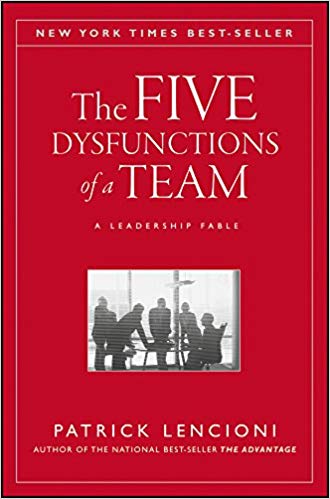

This article is an excerpt from the Shortform summary of "The Five Dysfunctions of a Team" by Patrick Lencioni. Shortform has the world's best summaries of books you should be reading.
Like this article? Sign up for a free trial here .
Does your team or workplace have fear of conflict? How do you deal with this so you can have healthy conflict? Learn tips from 5 Dysfunctions of a Team.
Passionate, ideological conflict is necessary for teams to learn from past mistakes, take decisive action, and tap into the full team’s talent and experience. This requires healthy conflict, but dysfunctional teams have a fear of conflict.
Fear of conflict is a direct outgrowth of the first dysfunction, absence of trust. Without the guardrails that trust provides, teammates will be fearful that any conflict will devolve into personal sniping and unproductive arguing—so they avoid conflict altogether. Trustful teams don’t have this problem, because their conflicts are about substantive issues, not personal feelings.
Productive, ideological conflict is different from interpersonal conflict. Ideological conflict is driven by concepts, ideas, and goals.Teams avoid these discussions because they fear (often correctly) that they will get heated and become uncomfortable. But that’s ok! Passion, emotion, and even frustration are all natural and important parts of the process.
What’s not ok is when conflict is rooted in interpersonal politics. This kind of ideas-free conflict achieves nothing and only leads to bitterness and resentment that lingers after the argument is over.
In an environment absent of trust and with a fear of conflict, teams substitute artificial harmony for productive conflict, pretending to agree with one another in order to avoid the discomfort that comes with toxic conflict. Without regular, healthy conflict, hostilities and tensions simmer just beneath the surface, coming out as personal attacks, sarcastic and biting remarks, and passive-aggressive undermining.
The consequences of fear of conflict are also deeply harmful for a team. Mistakes that might have been exposed or resolved through open debate go undiscovered and unfixed, leading to wasted time and effort as the team continues pursuing the same wrongheaded course. Since these teams also shy away from discussing controversial topics, major opportunities are squandered through inaction.
Fear of Conflict Example
When Mikey refuses to accept responsibility for marketing’s role in the company’s lack of success, Carlos knows that she’s in the wrong. “If the company as a whole is struggling, then clearly we’re not succeeding on an individual level either,” he thinks to himself. However, he does not press her on this point because he thinks she’ll snap under pressure of being called out by a colleague. This is a wasted opportunity, and as a result, the discussion goes nowhere.
Solving Fear of Conflict: Empowering Constructive Conflict
To recap, Dysfunction 2 is fear of conflict, in which teammates avoid having productive, ideological debate and steer away from discussing controversial topics. When this happens, problems go undetected, mistakes are repeated, and opportunities are squandered.
The general theme to fixing this is by encouraging teams to deal directly with sources and topics of disagreement, rather than ignoring them. Once they see that conflict can be a productive endeavor, they will get comfortable making it a more regular part of their decision-making process.
Here are some specific tactics teams can use to get comfortable leaning into conflict.
Fear of Conflict Solution 1: Mining
This involves teams bringing up previous disagreements and forcing them to work through issues that they would otherwise avoid. This direct acknowledgment is key, since not talking about a conflict doesn’t resolve the underlying issue at all—it just causes it to manifest in other, more destructive forms (like personal grudges).
When employing the mining technique, it’s important to limit the discussion to one disagreement at a time, to avoid getting sidetracked by smaller, tangential disagreements. Once the main disagreement is resolved, move on to the next one. Assign a member of the team to take on a supervisory role if needed.
Fear of Conflict Solution 2: Real-Time Permission
Here the leader coaches and encourages the conflict. When people get uncomfortable with conflict, the leader reminds the team that debate is a productive and necessary part of team-building. Since dysfunctional teams are often accustomed to team leaders suppressing debate or shielding individuals from conflict, this exercise reverses that effect and gives the team the confidence and permission structure to continue on with debate.
Fear of Conflict Solution 3: The Leader’s Role
To promote healthy and productive conflict, a leader must resist the urge to protect the team from peer criticism. Stifling a lively debate is one of the worst mistakes…
———End of Preview———

Like what you just read? Read the rest of the world's best summary of Patrick Lencioni's "Five Dysfunctions of a Team" at Shortform . Learn the book's critical concepts in 20 minutes or less .
Here's what you'll find in our full Five Dysfunctions summary :
- What the Five Dysfunctions are
- Why absence of trust is the fundamental dysfunction
- How to get people to argue the right way
- Strategies and exercises to overcome each dysfunction






